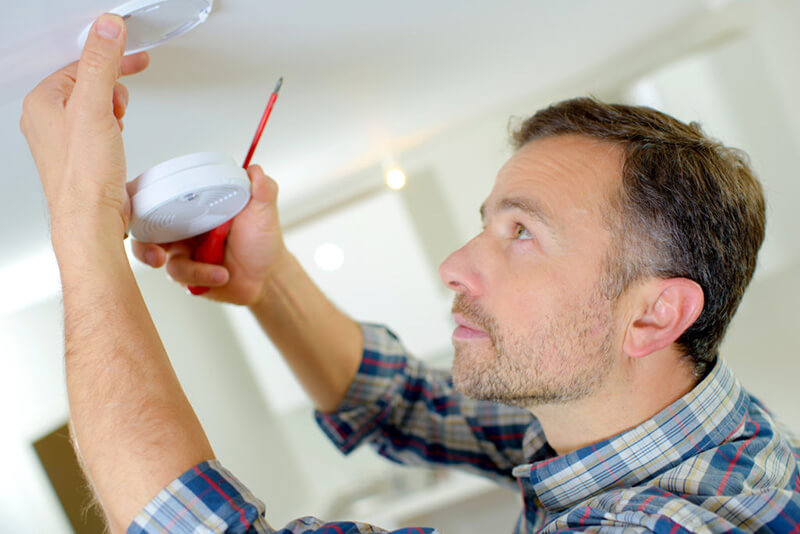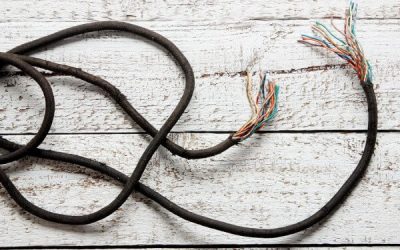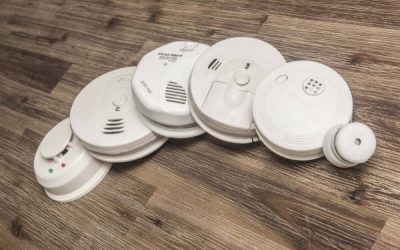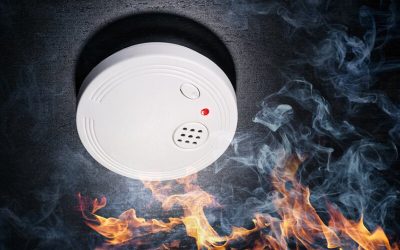Nothing is more important than the safety of our loved ones. However, the sheer volume of information regarding fire safety can be daunting.
We’ve dug through the forms, legislation and housing acts to bring you a guide on how many smoke alarms you need for your home. As always, be sure to check with your local authorities to be sure.
When it comes to smoke alarms, states and territories base their legislation on guidelines set by the Australian Federal Government. Modifications to suit specific, local needs are then set by the state or territory.
With this in mind, most of our research has been taken from the Australians Standards Mark AS 3786, we’ve added this link for you in our further reading section. This way you can stay up to date with the current laws and be as informed as possible.
So, how many smoke alarms do I need?
Returning to our main topic of how many alarms are required in a home, the answer is… it depends! Depends on what? It depends on:
- The size of your home
- The layout of the house including bedroom locations, etc.
Also, mains powered smoke alarms must be installed:
- By a certified electrician (such as us – WA’s owned and operated Sarros Electrical) and
- The installation needs to abide by both the Building Code of Australia and smoke alarm legislative requirements.
If you live in Perth, Peel or South West WA, we’ve got you covered!
If you’re looking to rent or sell your property, all smoke alarms must meet the latest regulations, be in good working order, and be less than 10 years old.
Read on to learn everything you need to know about smoke alarms in your home.
Smoke alarms for single storey homes
In single storey houses, the laws dictate that a smoke alarm must be present in:
- All hallways that lead to bedrooms
- When no hallway exists, in an area near the bedrooms
Let’s take a look at an example. In the image below is a 3 bedroom single story house, with all the bedrooms being located on the right side of the house.

Since all the bedrooms are located next to each other and a hallway is present (in diagram 1), only one smoke alarm is legally required. However, certain states and territories in Australia will be shifting towards an alarm in every bedroom in the near future (see further reading for WA specific legislation).
Whilst at the time of writing, one smoke alarm suffices here, taking the approach of a smoke alarm in each room now will future-proof your home (should you choose to sell) and offers your family the greatest degree of protection.
Most single storey designs have a master bedroom toward the front, with other bedrooms at the back. If your home is similar, see the diagram below:

You can see our second regulation comes into play – when no hallway is present we must add an alarm near the bedroom.
As such, in this picture (diagram 2), a second alarm has been added just outside the master bedroom.
Remember, this is the minimum legal requirement when it comes to installing smoke alarms. For those that wish to be more prepared for an emergency, other alarms can always be added around the house. We can help you decide on the best smoke alarm positioning for your property if it’s based in Perth, the Peel or South West WA.
Smoke alarms for double storey and multi-storey buildings
When dealing with a multi-storey house, we’re just building on the already established rules applied to single storey dwellings.
Each level containing bedrooms must follow the pre-established rules, namely having alarms either in the nearest corridor or in the rooms themselves.
However, if a floor is present that contains no bedrooms (such as a basement car park or laundry) these floors must have a minimum of one smoke alarm.
The legal requirement here is that the alarm be placed along the route that people would likely travel in an emergency – such as in or near a stairwell.

As can be seen in the above picture (diagram 3), each floor has its own smoke detector present and functioning.
Any floor with bedrooms (most likely the top and middle floor) will have an amount of smoke alarms depending on the layout and positioning of the bedrooms (following the rules described above in the section for single storey homes).
Notice the bottom floor has a smoke alarm near the stairwell, the likely route taken in an emergency.
So, if all floors in this house (diagram 3) matched the floorplan found in diagram 2, the house would need a total of 6 functional alarms. This seems like a lot of smoke alarms, but it saves lives as you are most likely to wake up from an alarm close by.
Guest homes and boarding houses
For those that are planning or building a guest house or a boarding house, there are a few more factors to consider.
Firstly, be sure that your project falls under residential guidelines in your local area and zoning regarding guest capacity and limitations on area size.
As guest houses often house independent individuals that may not know each other, the required safety rules change. Each bedroom must have a working smoke alarm in addition to the communal alarm in the hallway.
For example, the following boarding house (diagram 4) has 5 individual bedrooms, each with its own smoke alarm. These smoke alarms are connected to the hallway sensor alarm.

A good general approach to this is to count the number of bedrooms you plan on having and add one to the total number.
For the above example, we can see the floor plan contains a total of 5 rooms, so we take this and add 1 (the main smoke alarm) and we reach the legal minimum number required for this boarding house.
Additionally, it’s worth noting in guest housing or boarding housing, lighting must also be present in the smoke alarm itself or the corridor. Upon detection of an emergency this lighting must turn on to indicate an emergency is in progress and all occupants must evacuate.
Who can install smoke alarms?
In WA, newly built houses must have mains powered smoke alarms installed (unless the house isn’t connected to a grid, in which case battery based smoke alarms may be used).
Smoke alarms that are connected to the mains have battery backup to ensure your smoke alarms always have a source of power.
Mains powered smoke alarms must be installed by a licensed electrician in accord with the Building Code of Australia and smoke alarm legislative requirements.
Additionally, as of 2015, any house containing multiple smoke alarms must interconnect them. Interconnected alarms ring simultaneously in the event of a fire, giving everyone the greatest amount of time to react.
The latest information on smoke alarms in WA
As technology changes and time moves on so do rules and regulations. To avoid falling behind on the latest safety requirements we’ve provided the following web links so you can stay safe and up to date.
- General information by DFES on smoke alarms for Western Australia.
- Australian Government smoke alarms AS 3786.
Although we’ve covered the essentials, it’s understandable that regulations and building codes can easily become confusing.
If you live in Western Australia, feel free to give us a call! We’ll give you some pointers, and can easily organise safe smoke alarm installation that meets the latest regulations. After all, we’re here to help you!




